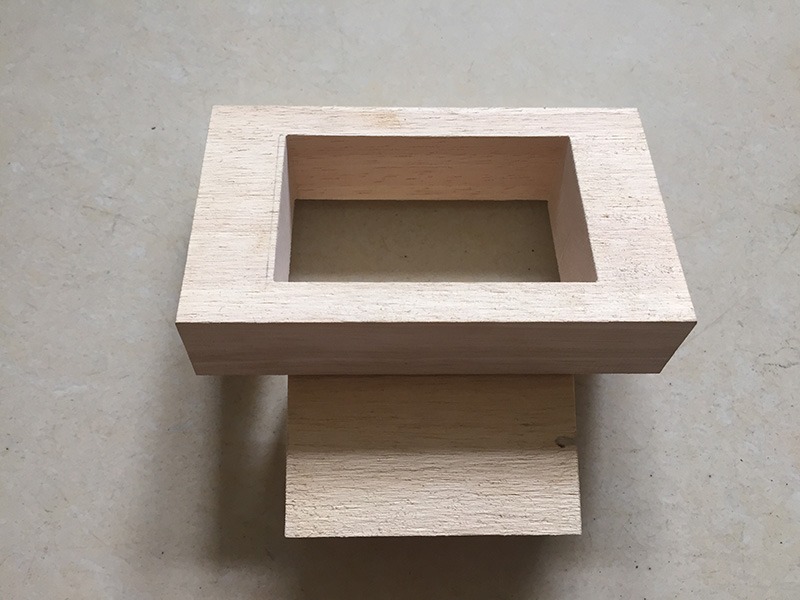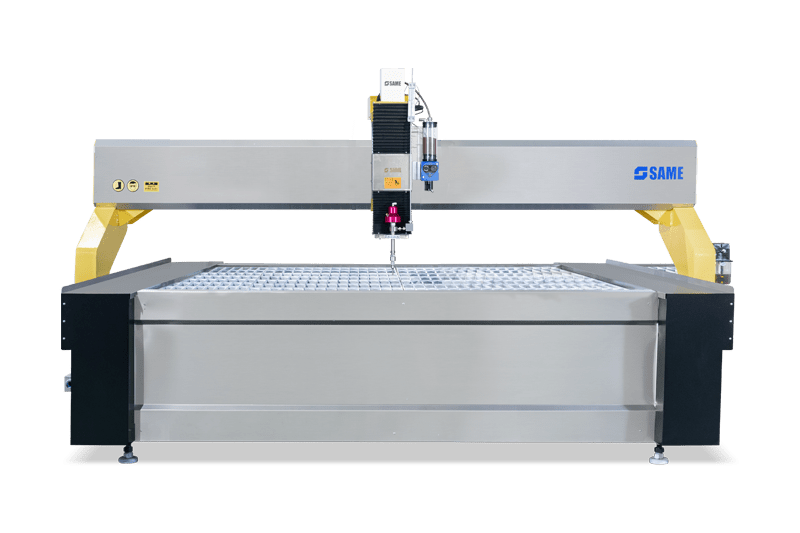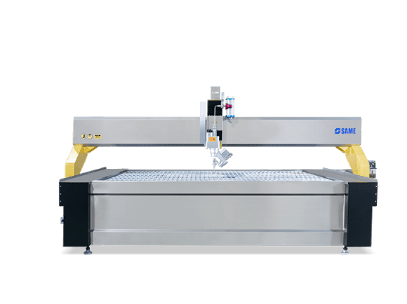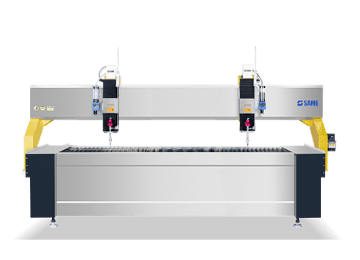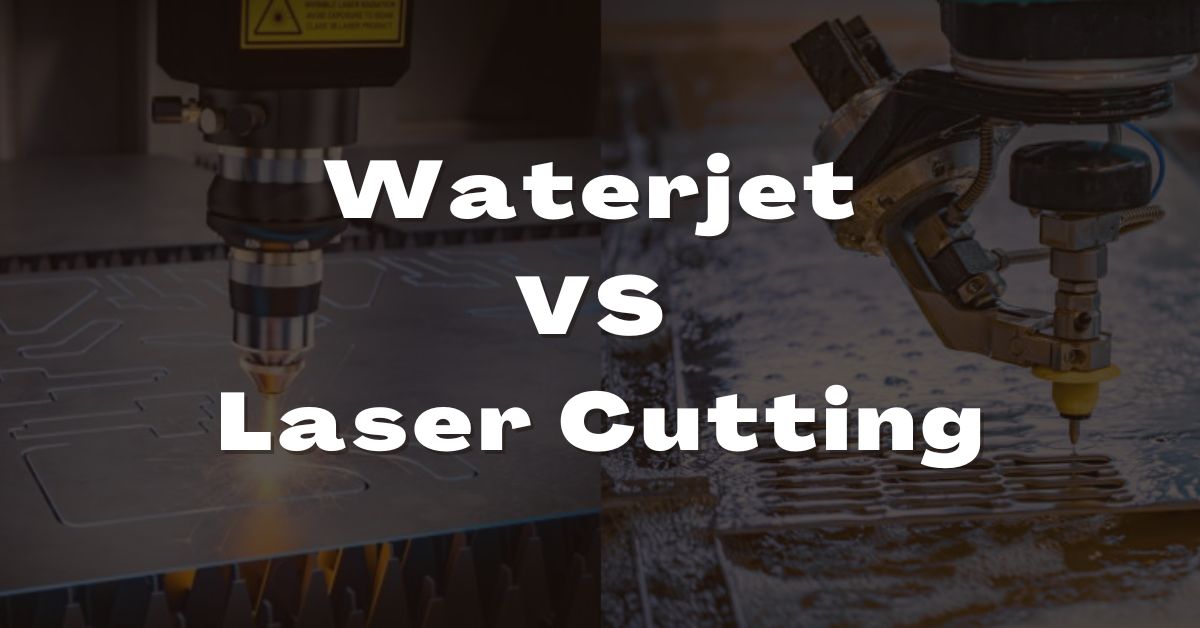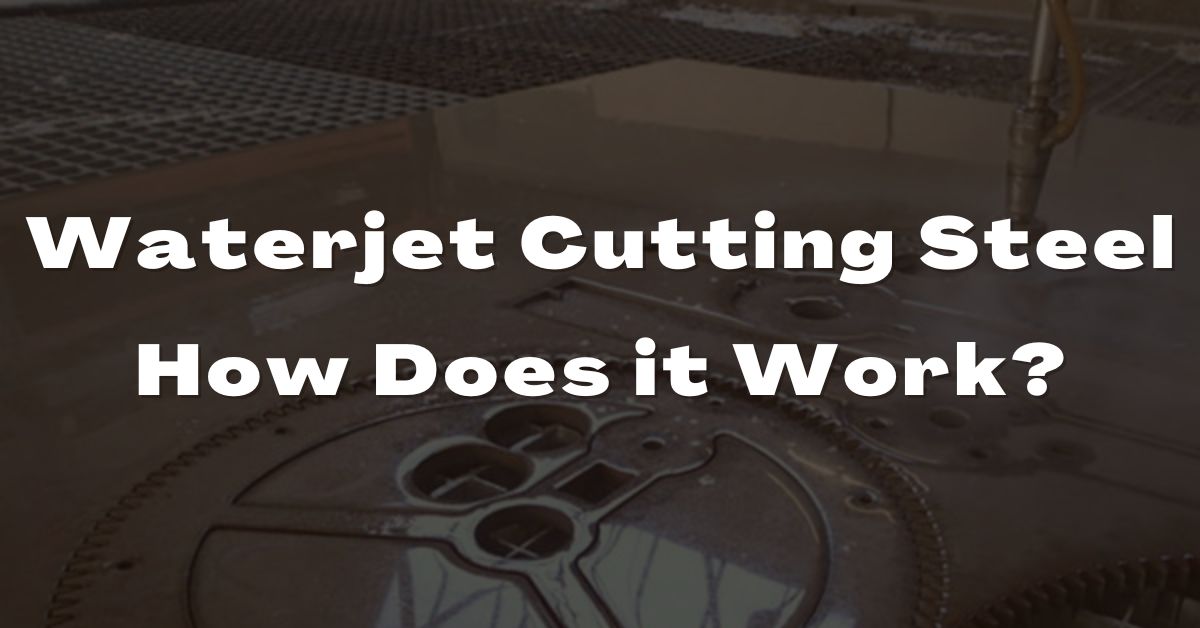Waterjets are a fairly new method of cutting and shaping materials. You’ve probably seen videos of a high-speed stream of water cutting through various materials. But anyone who works with wood will have only one question in mind, can waterjet cut wood?
Not only can waterjet cutters be able to cut wood but it can cut through almost any object effortlessly (with exceptions). Hence, making them a great tool for cutting and shaping various materials in both professional and DIY projects.
However, people aren’t much aware of the amount of potential waterjet cutters can pack in them. So, to give you all a better idea about how strong and efficient waterjet cutters can be, I’ll be describing in detail what waterjets can do and debunking a few myths as well.
Table of Contents
5 Major Myths about Waterjet Cutters
Most of the doubts that arise on whether the fact that waterjet cutters can cut wood or not stems from myths that are quite usually misunderstood and can be debunked. So without further ado, let’s jump into some waterjet cutter myth busting!
Myth 1: Wood is an organic material unlike glass, concrete, metal. It can’t be simply cut through with pressured water.
Yes, it can since wood is water absorbent and is resilient enough to avoid immense impact. The pressure of waterjet cutters is strong, controlled, and precise, hence, leading to accurate cutting of wood with little to no inconveniences.
Myth 2: Waterjet cutters cannot cut through thick wood or complicated shaped wooden structures.
Depending on the type of waterjet you are using pure waterjet cutters are usually for softer materials with simplistic shapes. However, abrasive waterjet cutters are the ones that pack enough punches to take on more complex and harder objects like steel, wood, and carbon fiber head on!
Abrasive waterjets use water mixed with an abrasive mineral like garnet to apply higher enough force and pressure to cut through thicker and harder materials.
Myth 3: Waterjet cutters will ruin the shape of wood and might split apart.
Waterjet cutters are made to do what they are asked to as they are controlled and commanded by strong Computer Numerical Control routers fitted with these cutters and are therefore, enough to make accurate and controlled cuts.
The texture of your wood edges will be smooth and most of the time there will be no need for a secondary furnishing
Myth 4: Using water to cut an object like wood will make it wet or delaminate it.
Likely not if CNC is used to set up the abrasive waterjet cutter to cut with a pressure of 60,000 PSI and a speed of 600”/minute.
The high pressure and velocity of the water will be sufficient enough for water to pass through the wood by causing little to no surface wetness or delamination!
Myth 5: They are so noisy and slow! Cutting wood with them might just not be feasible.
The amount of accelerated erosion abrasive waterjets can pump literally makes them able to slice through any surface with ease in a shorter time than most conventional woodcutters.
On top of that depending on the distance between the material and the mixing tube, the sound level is only within 95 decibels above ground but can be lowered to 75 decibels when it’s used underground.
Can You Waterjet Plywood?
Plywood is a complicated structure that’s layers of different woods plied together in a direction suitable to how their grains are altered.
It is very much possible to waterjet Plywood safely without hurting its structural integrity or messing up the shape. You won’t even have to worry about causing delamination or ending up with wet edges. As long as the pressure and velocity of the waterjet are set right, you can make the water stream pass through the surface of the plywood and avoid causing any wetness.
Though there are certain possibilities of not getting a clean edge or maybe some slight delamination once you get your settings and proper controls adjusted. You can still tweak your Computer Numeric Control settings just right to get the pressure, angles, and everything about the right to avoid any disruptions.
A Mach-3 velocity set waterjet cutter can cut through 5 sheets of stacked plywood about 6″ x 4″ x 1/8″ thick in under 3 minutes.
How Thick Can a Water Jet Cut Through?
For thick substances like plywood, waterjets are the best there is to get the job done for any 3x to 4x IPE wood or 3 to 4 inches of thick materials to be cut with ease at a very short time. You just need to apply the right pressure and the right depth adjustments in the mixing tube and other CNC variables.
The highest limit of thickness that you can cut through is about 24 inches of some materials however, the tolerance level will be reduced and it will take a lot greater time than usual.
Honestly, softwood or hardwood doesn’t matter, waterjet cutters can cut through any type of wood efficiently.
Tips for Cutting Wood with Water
Some general tips to cut wood with water include the following:
- Use high-quality wood
The higher the quality the smoother the cutting process will be. Low-quality wood can be brittle and split apart if it cannot handle the set waterjet pressure.
- Avoid wood with any sort of knots
Knots are harder to be cut as they are denser and harder compared to the rest of the wood. The grains in knots when cut can fling across and hurt others if they are nearby.
- Use wood with no blowbacks
Abrasive waterjet cutters use hard crystal particles that are available in tiny bits by millions. They can all allocate within a certain blowback if the wood has one.
- Use abrasive garnet mixed with water
Water alone cannot cut through wood as efficiently as using garnet which is an industrially used gemstone used as an abrasive material. It can cut through the water faster and better when mixed with water in a waterjet cutter.
- Use the right pressure settings
Make sure the pressure is close to 59,000-60,000 PSI with the speed of the waterjet set to 600”/minute. If the settings of the water are set to these options, then the stream of the waterjet will be strong enough to penetrate the woodcut through thicker wood.
- Use up to 5” wood for optimum results
Five inch is not too less nor too high for waterjet cutters to cut through efficiently. The wood’s high resilience can deflect the impact of the high pressure acting upon it.
Water Jet Cutters Vs Saws
Saws whether basic or electric are the most commonly used tools for cutting and shaping wood. If you are a professional carpenter or just a DIY handyman then you most probably have one of these. So, why invest in a waterjet? What are the advantages of water jets over saws?
Well, there are obviously some benefits to water jet cutters over saws. Let’s take a look at the advantages of one over the other.
Advantages of Waterjets
- Waterjet is faster than a normal saw when cutting wood.
- Waterjets save time.
- Waterjets can be more accurate with the wooden edges as they are automated.
Advantages of Saws
- Saws way cheaper compared to waterjets
- Saws have low maintenance but waterjet cutters need to be taken care of constantly if they are used frequently to cut wood
- Saws will increase craftsmanship with cutting wood
As you can see both saws and water jets have some clear advantages over the other. Consider these and decide for yourself whether investing on a waterjet would be worth your time and money.
I hope this article covered all your doubts regarding the question “can waterjets cut wood?”
Now, I would like to recommend a waterjet project in case you are planning to get yourself one. Since you have a better idea about waterjet cutters then this model will be the perfect one for you to get started and ease up on wood cutting! Thanks for having a read and all the best!


